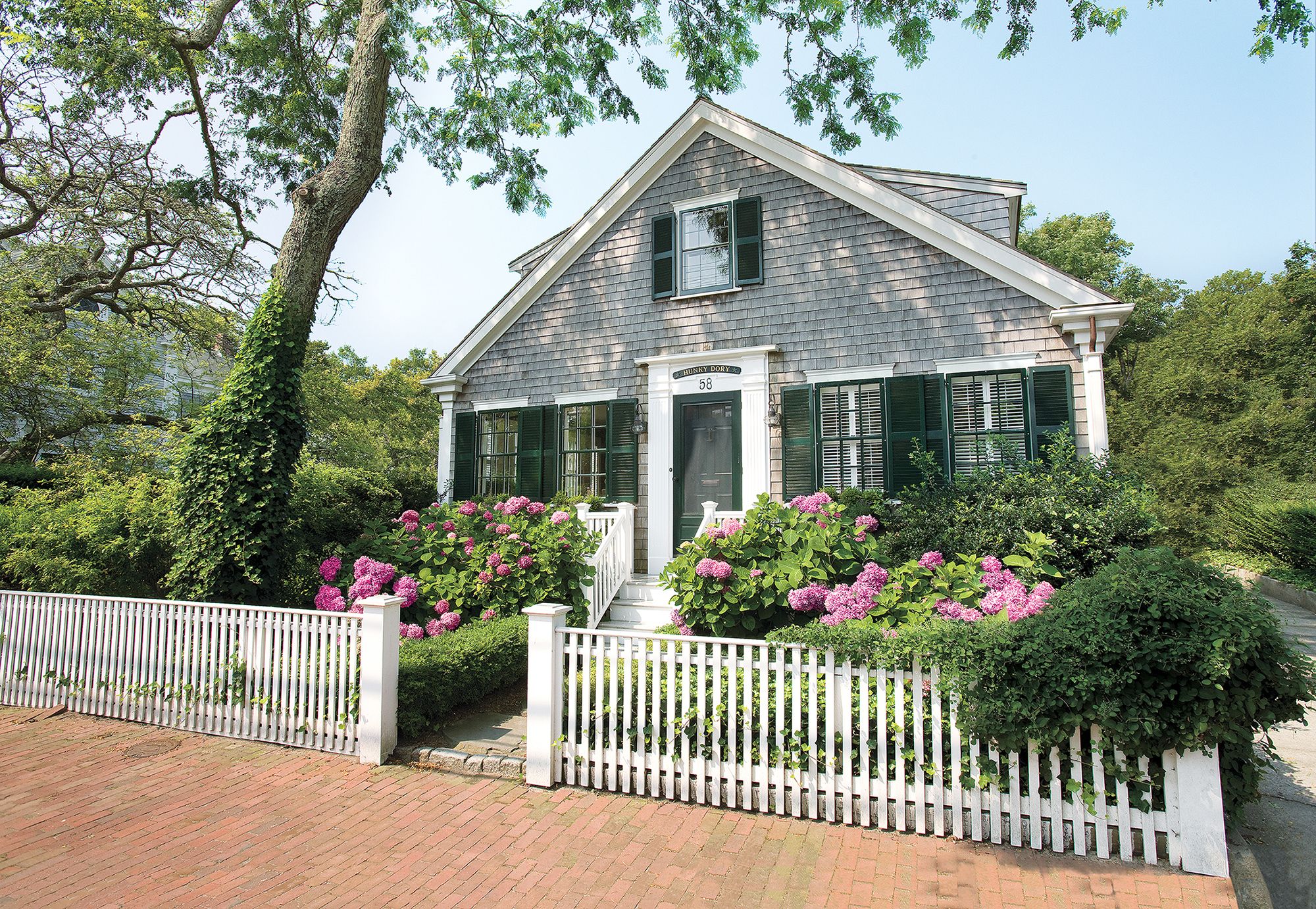A well-chosen wood fence can serve multiple purposes, from providing privacy and security to enhancing your home’s curb appeal. Whether you’re looking to safely corral kids and pets, block wind and noise, or upgrade your curb appeal, there’s a fencing option to suit your needs.
In this guide, we’ll explore eight popular wood fence styles, their components, factors affecting longevity, and tips for choosing and maintaining the right fence for your outdoor space.
Components of a Fence
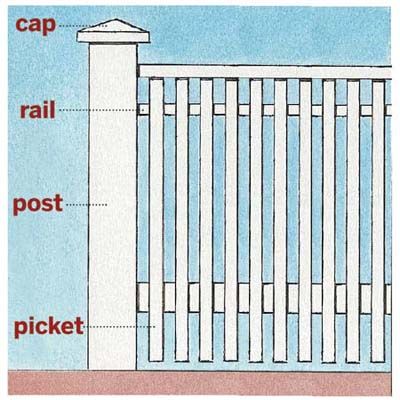
Understanding the basic components of a fence is crucial for making an informed decision about your outdoor project. All fences, regardless of style, use the same fundamental elements to create a sturdy and attractive structure. Let’s examine the three main components that make up a typical wood fence.
Posts
Posts are the vertical supports that form the backbone of your fence. These sturdy elements are set into the ground and provide stability for the entire structure. For optimal durability, it’s recommended to install fence posts by burying at least one-third of each post in the ground. Typically, posts are spaced between six and eight feet apart, depending on the fence height and design. Using treated wood or materials with inherent rot-resistance can further ensure longevity.
Rails
Horizontal rails connect the posts and support the pickets, fence boards, or lattice panels. These components run parallel to the ground and are crucial for maintaining the fence’s structural integrity. The number and spacing of rails can vary significantly depending on the fence style and height. Taller fences often require additional rails for support. Attaching the rails securely with weather-resistant hardware like hot-dipped galvanized nails can improve their durability.
Pickets or Boards
Pickets or boards are the vertical elements that attach to the rails, creating the visible face of the fence. These components come in various shapes and sizes, from pointed pickets to flat boards, and are responsible for the fence’s overall appearance and functionality. The spacing between pickets or boards can be adjusted to achieve different levels of privacy and airflow. Varied designs, such as scalloped or dog-eared tops, can add a customized look to your fence.
Factors for Fence Longevity
When investing in a wood fence, it’s essential to consider factors that affect its lifespan. A well-constructed fence can last about 20 years, but several elements influence its durability. Let’s explore two critical factors that determine how long your wood fence will stand the test of time—wood type and construction quality.
Wood Type
The type of wood used in your fence plays a significant role in its longevity. Redwood, cedar, and pressure-treated pine are known for their durability and resistance to decay. These woods naturally resist rot and insect infestation, making them excellent choices for long-lasting fences. When selecting a wood type, consider its natural properties and how they align with your local climate and maintenance preferences. Additionally, evaluating the environmental impact of the wood source can be an important factor in your choice.
Construction Quality
The quality of construction is equally important in determining a fence’s lifespan. Proper assembly techniques and the use of weather-resistant fasteners are important. For protection from the elements, use hot-dipped galvanized or stainless-steel nails and screws to withstand year-round exposure to the elements. Additionally, installing the post at a sizable depth and stabilizing its base in a sturdy medium like concrete can significantly impact the fence’s overall durability and performance. Regular checks for wear and prompt repairs can also enhance the fence’s longevity.
Popular Wood Fence Styles
Wood fences come in a variety of styles, each offering its own benefits and aesthetic appeal. From classic picket fences to privacy-focused vertical board designs, there’s a wood fence style to complement every home and landscape. Let’s explore five popular wood fence styles that can enhance your outdoor space.
Picket Fences
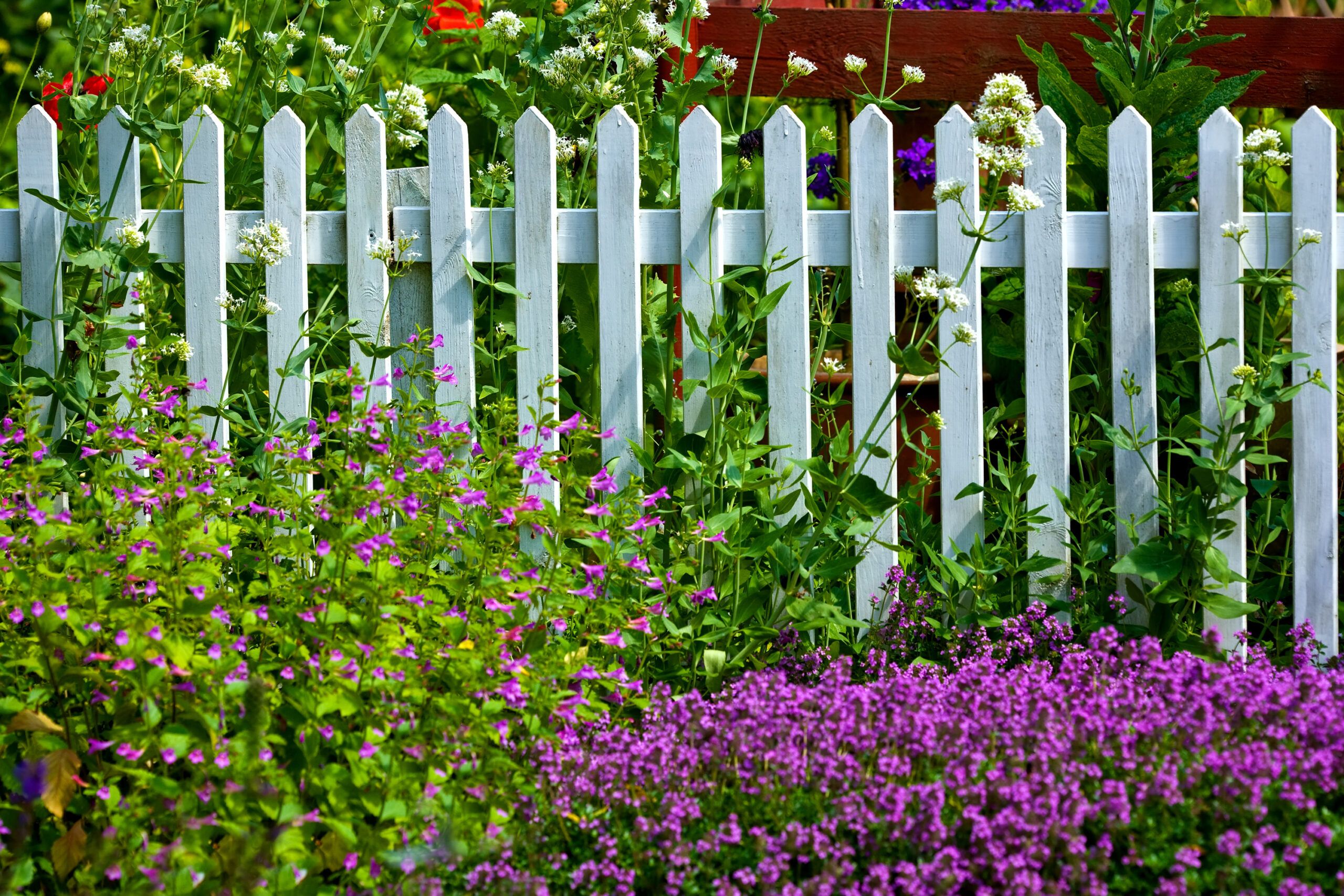
Picket fences are a timeless choice, often associated with charming cottage-style homes. These fences are often associated with charming cottage-style homes. They typically stand three to four feet high and feature widely spaced, pointy-topped pickets. The design not only discourages climbing but also helps shed raindrops efficiently. Picket fences are best suited for:
- Front yards
- Gardens
- Pool enclosures
- Defining property boundaries
Their open design allows for visibility while still defining property lines, making them an excellent choice for homeowners who want to add curb appeal without sacrificing openness. By painting or staining in various colors, you can also customize picket fences to match or complement your home’s exterior.
Post and Rail Fences
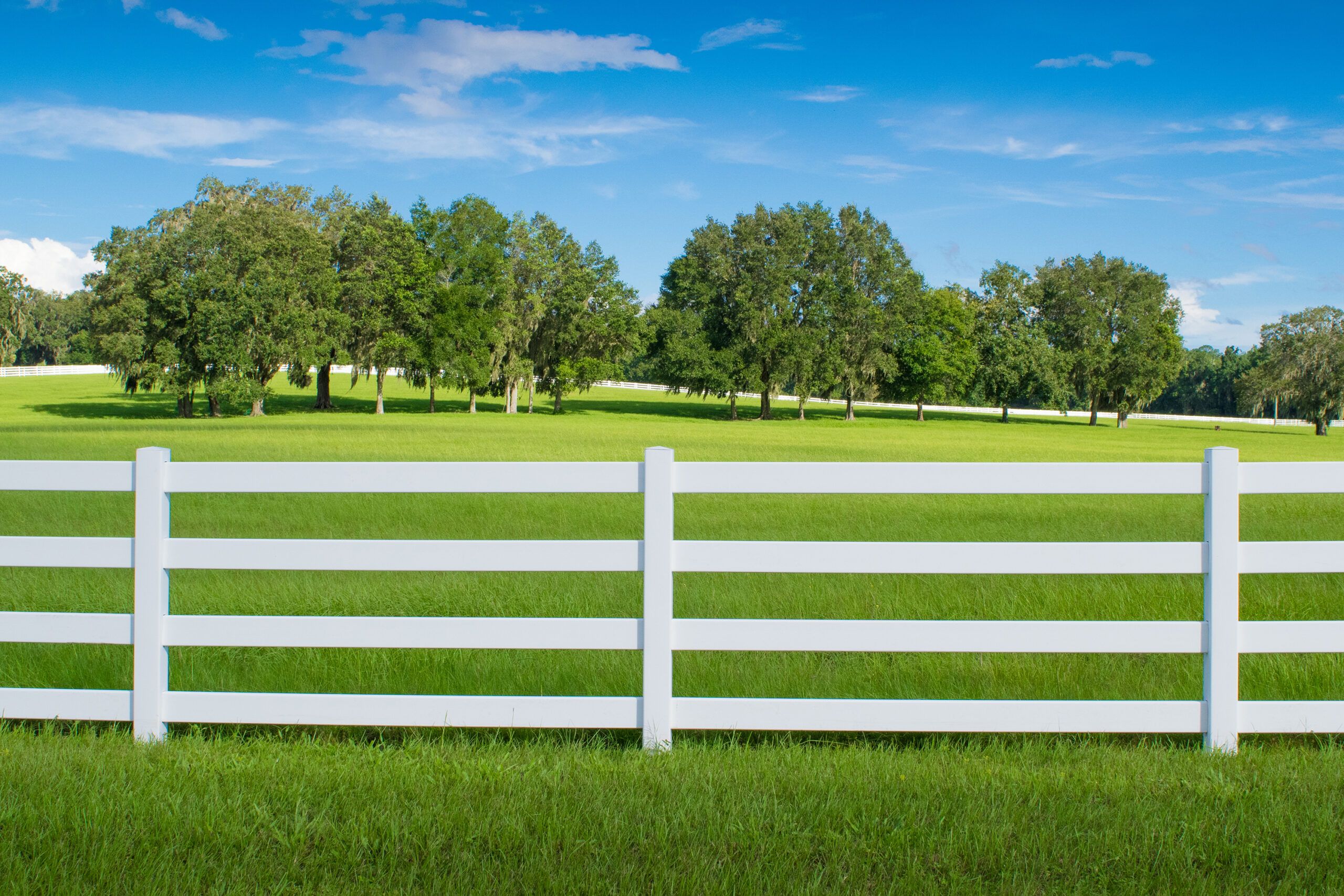
Post and rail fencing is the most practical, robust, and minimalistic wood fence option on our list.
Post and rail fencing is the most practical, robust, and minimalistic wood fence option on our list. Traditionally used for penning livestock, post and rail fences are relatively inexpensive, making them ideal for enclosing large stretches of land and imparting an understated, rustic aesthetic. Post and rail fences are suitable for:
- Large yards
- Pastures
- Rural properties
- Defining boundaries without obstructing views
Using sturdy, rot-resistant wood for the posts can enhance the durability of these fences. Adding a protective finish can also help to withstand weather elements and extend the fence’s lifespan.
Lattice Fences
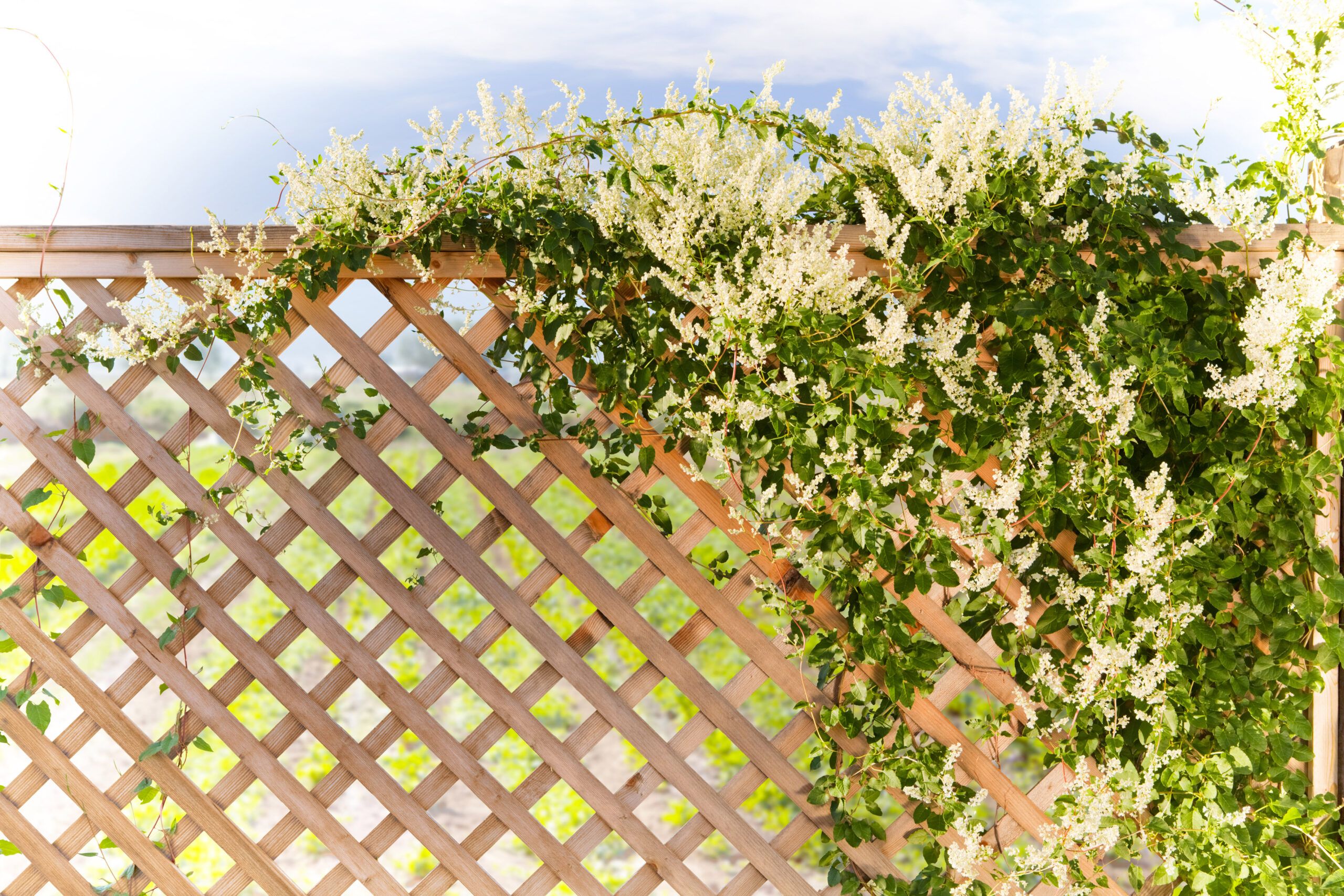
Lattice fences provide a perfect balance of privacy and airflow, making them ideal for various outdoor Lattice fences provide a balance of privacy and airflow, making them ideal for various outdoor spaces. These fences feature crisscrossing strips of lath that obscure direct views while allowing light and air to pass through. Lattice fences are excellent choices for:
- Decks
- Gardens
- Patios
- Pools
- Creating a backdrop for climbing plants
Their design also provides an ideal structure for climbing plants, allowing you to create a living wall of greenery. This combination of functionality and aesthetic appeal makes lattice fences a versatile option for many homeowners.
Louver Fences
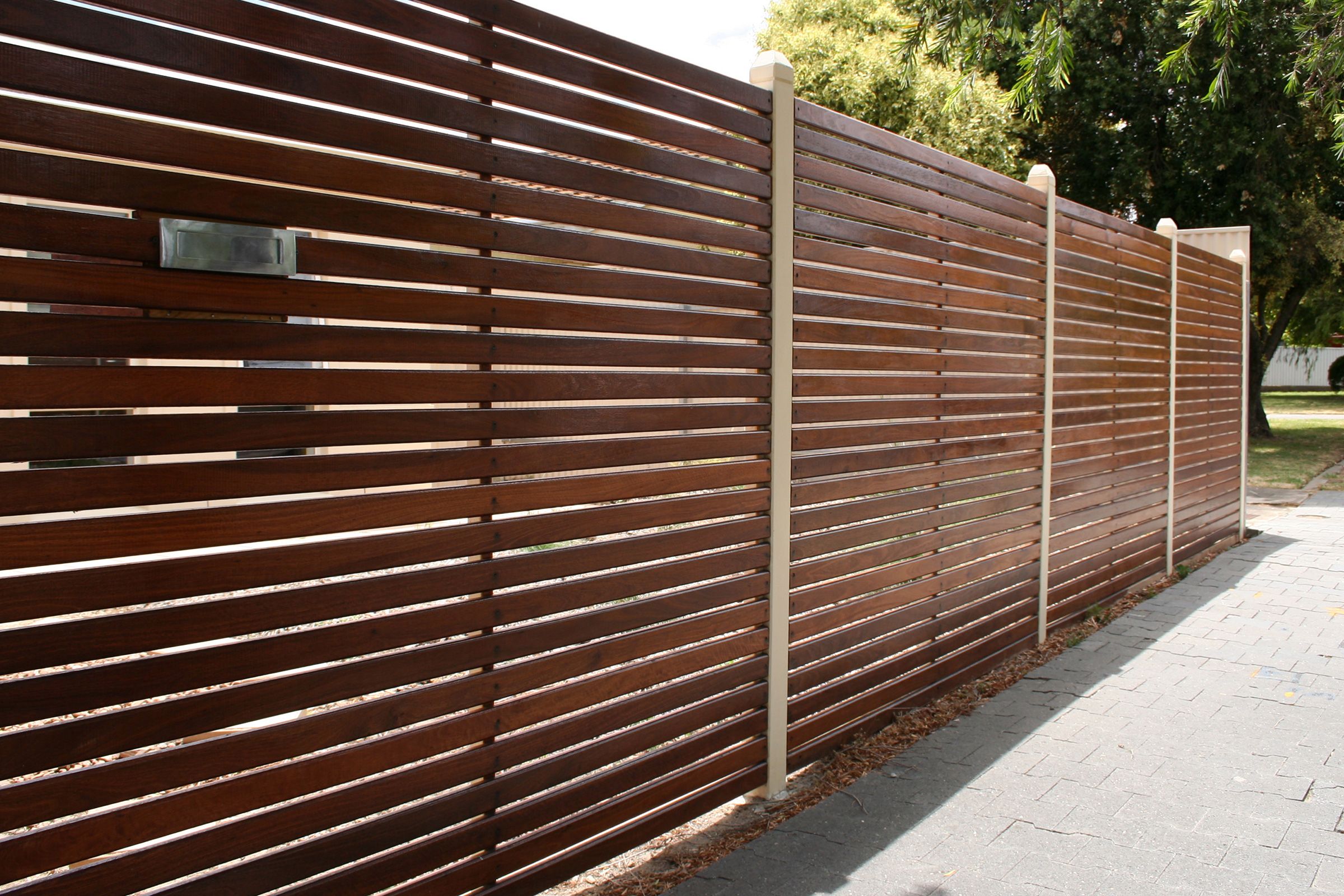
Louver fences offer a modern take on privacy fencing, featuring vertical louvers or staggered boards. This design provides privacy when viewed straight on but allows for airflow and partial views from the side. Louver fences are particularly well-suited for:
- Pools
- Decks
- Parking pads
- Patios
- Modern or contemporary home styles
The unique design of louver fences makes them an excellent choice for homeowners who want to balance privacy with a sense of openness in their outdoor spaces. Opting for advanced materials resistant to weathering can further enhance the performance and longevity of louver fences.
Vertical Board Fences
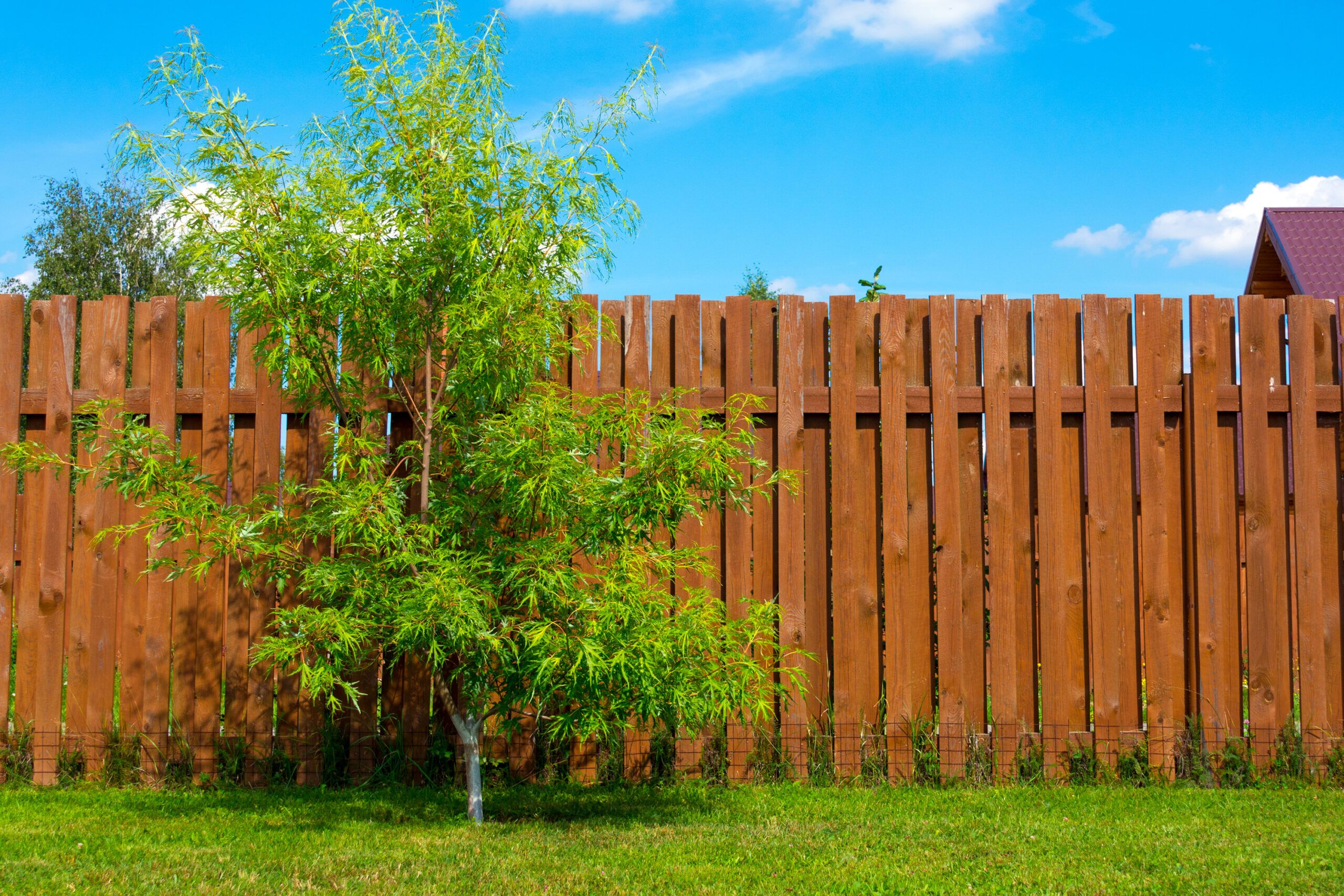
For maximum privacy and wind protection, vertical board fences are an excellent choice. These fences For maximum privacy and wind protection, vertical board fences are an excellent choice. These fences feature tall vertical boards that are either overlapped or butted edge to edge. Vertical board fences are ideal for:
- Privacy
- Sound dampening
- Wind protection
- Creating a secluded outdoor living space
While these fences offer excellent privacy, it’s worth noting that they can block airflow, which may be a consideration in warmer climates. However, for homeowners prioritizing seclusion and noise reduction, vertical board fences are a top option.
Ornamental and Alternative Fences
While wood fences are popular, several ornamental and alternative options offer unique benefits. These fences can provide durability, low maintenance, and diverse aesthetic options to suit various home styles. Let’s explore three alternatives to traditional wood fencing that can enhance your outdoor space.
Wrought-Iron Style Fences
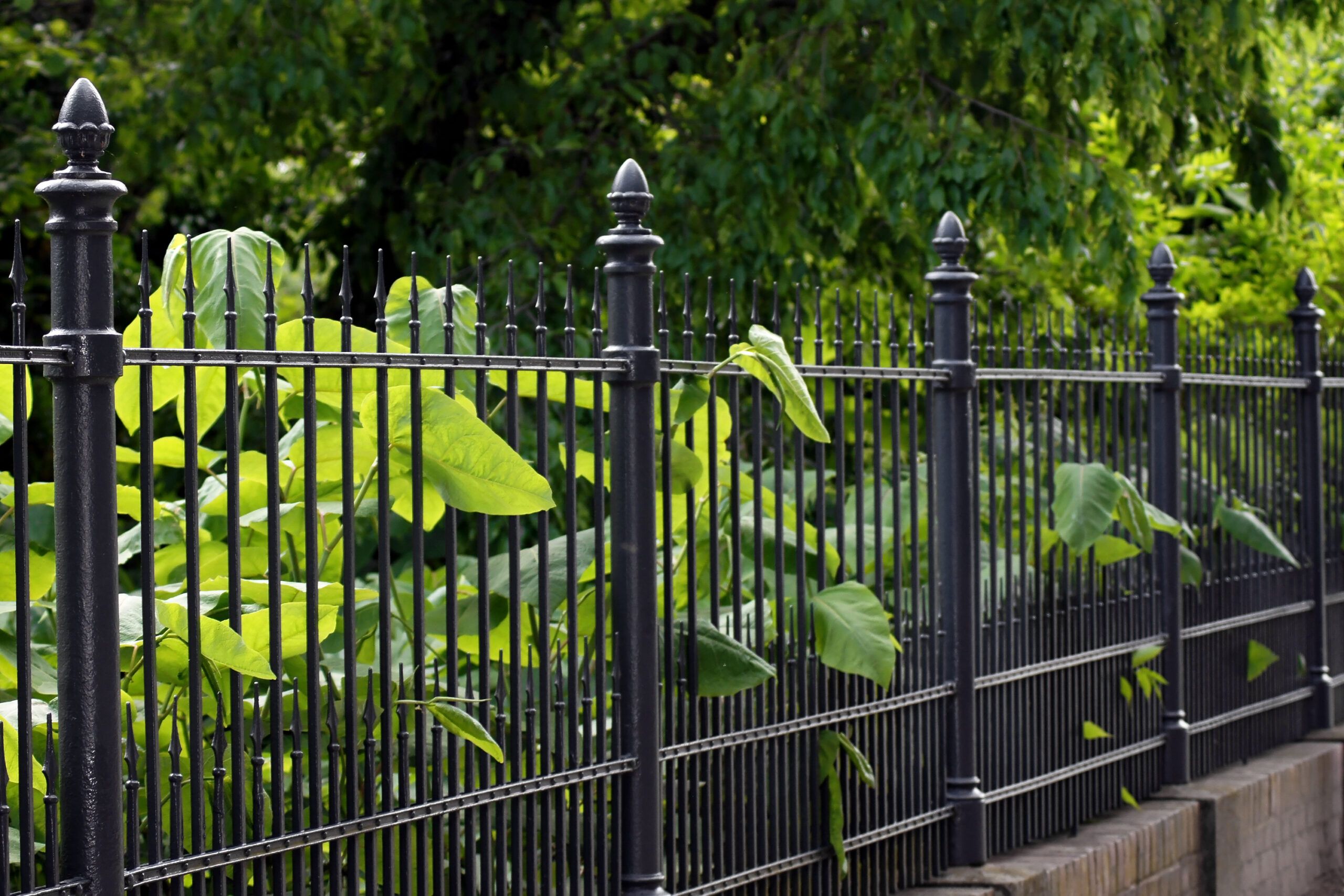
Wrought-iron style ornamental fences offer both visual interest and durability. Modern alternatives to wrought iron fencing often use aluminum, steel, or fiberglass to mimic the classic look of wrought iron without requiring extensive, regular maintenance. Wrought-iron style fences are good for:
- Historical or high-end properties
- Enhancing security
- Creating a formal garden atmosphere
These fences are known for their aesthetic appeal and strength. However, they offer limited privacy and require setting all posts in concrete for stability. Steel versions may also rust over time, necessitating maintenance. Opting for powder-coated finishes on metal fences can reduce rusting and extend their lifespan.
Vinyl Fences
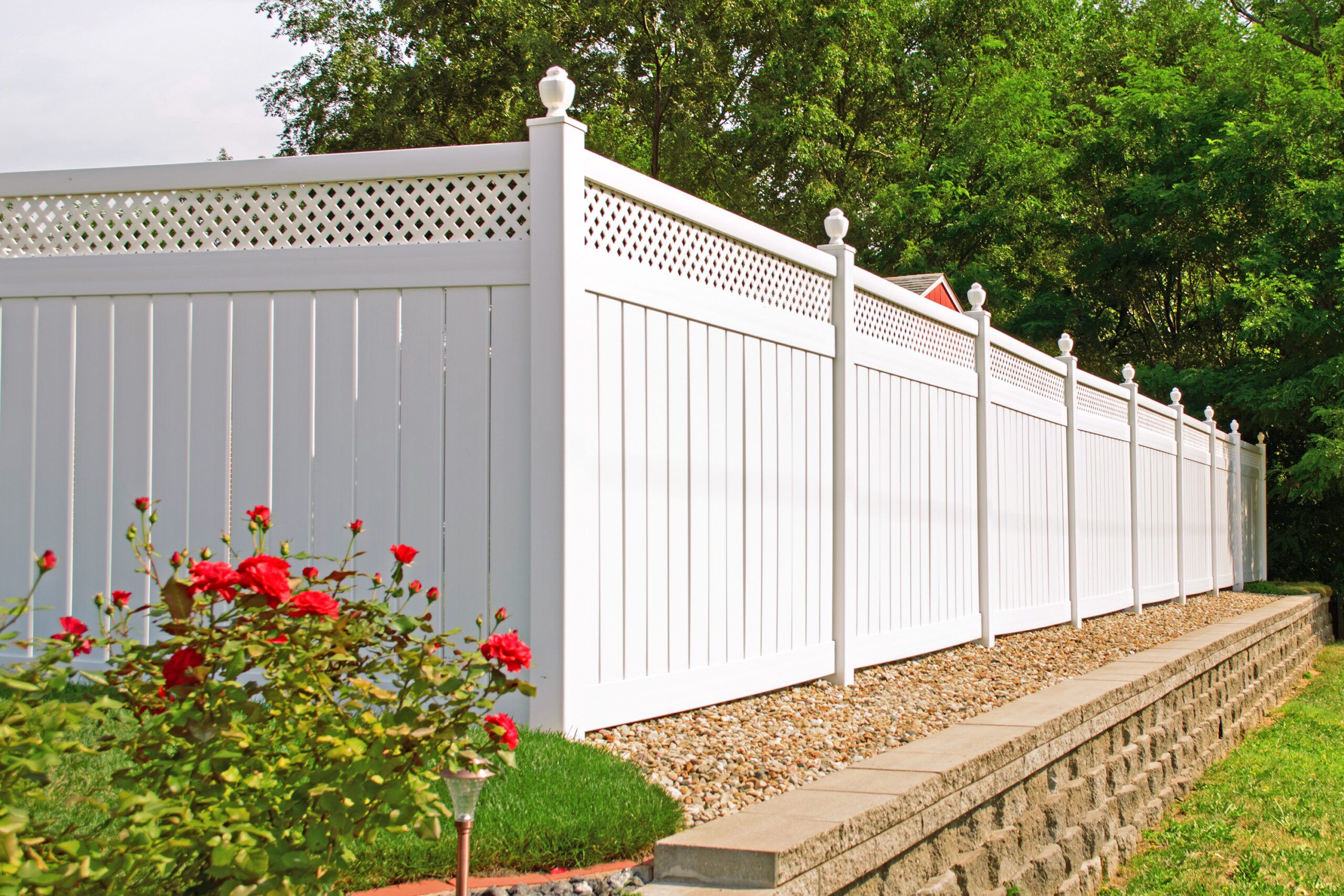
Vinyl fences provide a sleek, clean look with minimal upkeep. Manufactured from hollow polyvinyl chloride (PVC), these fences offer several practical advantages over their wooden counterparts. Vinyl fences are ideal for:
- Homeowners seeking low-maintenance options
- Environments prone to weathering
- Areas with high moisture or humidity
- Creating a uniform look in planned communities
Vinyl is an easy-care material, needing only occasional washing to maintain its appearance. However, their limited color palette and potential brittleness with age might not appeal to everyone. Vinyl fences can be reinforced internally with metal or wood for added strength.
Composite Wood Fences
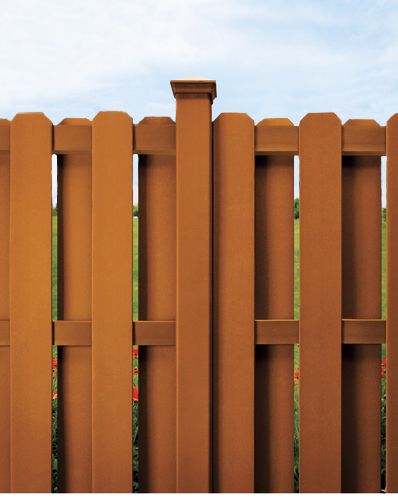
Composite wood fences combine the best qualities of wood and plastic. Made from a mixture of sawdust and plastic, these boards offer the aesthetic of wood with increased durability. Composite wood fences are suitable for:
- Homeowners wanting wood-like appeal with less maintenance
- Eco-conscious individuals
- Areas with extreme temperature fluctuations
- Long-term investments in fencing
These fences generally come with long warranties and are available in various natural wood tones. However, they require posts to be concreted for stability, thereby increasing installation costs and time.
Choosing the Right Fence Style
Selecting the ideal fence style requires evaluating your needs and preferences.
Assess the main reason you need a fence. Different styles serve different purposes. For example:
- Privacy: A vertical board or louver fence provides isolation
- Definition: Picket or post and rail fences offer demarcation without sacrificing openness
- Aesthetics: Lattice or ornamental fences can enhance the visual appeal of your landscape
- Security: Taller, solid fences or those with pointed tops can deter intruders
By identifying your primary needs, you can narrow down the styles that will best serve your purposes. Specific considerations, like including gates or integrating with existing structures, can also impact your decision.
Consider Your Budget
Your budget is a significant determinant when choosing a fence. Wood fences vary in cost based on material type and design complexity. Here’s a brief overview:
- Post and rail: Typically less expensive, and good for large spaces
- Lattice or louver: Moderate to high cost due to structural intricacies and craftsmanship
- Ornamental or alternative: Higher up-front cost but long-term savings due to low maintenance requirements
Factor in both initial costs and long-term maintenance expenses to ensure your selection is financially viable. Home resale value might also benefit from certain fencing types, offering a return on investment.
Consider Maintenance Requirements
Wood fences generally require more upkeep compared to vinyl or composite alternatives. Evaluate the time and effort you’re willing to invest in maintenance to choose a suitable style.
- Wood: Needs regular upkeep, such as staining and sealing
- Vinyl or composite: Offers a low-maintenance solution, typically requiring just occasional cleaning
- Metal: May require periodic painting or rust prevention treatments
Also, consider the local climate as it can significantly affect the aging and upkeep requirements of your chosen fence material.
Fence Installation and Maintenance Tips
Proper installation and regular maintenance improve the longevity and appearance of your fence. Whether you’re installing a new fence or maintaining an existing one, following best practices can help you get the most out of your investment. Let’s explore some key tips for fence installation and maintenance.
Proper Installation
Here are some important considerations to ensure you’re adhering to proper installation techniques:
- Check local regulations: Before installation, ensure your plans comply with local zoning laws and homeowners’ association rules regarding fence height and placement
- Mark utility lines: Always call your local utility companies to mark underground lines before digging post holes
- Set posts properly: Ensure posts are set at the correct depth (typically one-third of the post’s length) and use concrete for added stability
- Use quality materials: Opt for weather-resistant fasteners and high-quality wood or alternative materials suited to your climate
- Consider professional installation: To ensure that you meet all local requirements and maximize the longevity of your fence, consider hiring a professional installer
Routine Maintenance
Regular maintenance can significantly extend the life of your fence and keep it looking its best. Here are some maintenance tips:
- Clean regularly: Remove dirt and debris with a garden hose or pressure washer annually
- Inspect for damage: Check for loose boards, protruding nails, or signs of rot or insect infestation at least once a year
- Apply protective finishes: For wood fences, apply a water-repellent sealant or stain every few years to protect against moisture and UV damage
- Address issues promptly: Repair any damage as soon as you notice it to prevent further deterioration
- Trim nearby vegetation: Keep plants and trees trimmed away from the fence to prevent moisture buildup and potential damage
